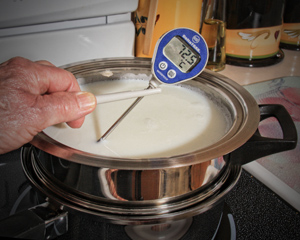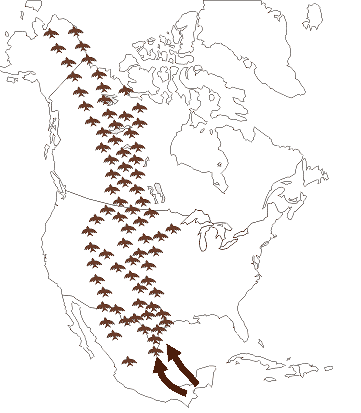Highly Pathogenic Avian Influenza Detected in Idaho Cattle
The Idaho State Department of Agriculture (ISDA), has identified highly pathogenic avian influenza (HPAI) in a Cassia County dairy cattle operation.
These are the first cases of HPAI in a dairy operation in Idaho. The affected facility recently imported cattle from another state that had previously identified cases of HPAI in cattle.
It is suggested the virus may be transmitted from cow-to-cow, in addition to previous reports indicating cattle were acquiring the virus from infected birds.
The primary concern with this diagnosis is on-dairy production losses, as the disease has been associated with decreased milk production.
Symptoms of HPAI in cattle include:
ISDA Response
The ISDA has placed a quarantine on the positive facility, meaning no livestock are permitted to enter or exit the infected premises. This is an open case, ISDA is continuing to investigate via additional sampling.
The infected cattle are being quarantined from the rest of the herd on the facility. Pasteurized milk from affected cows does not present a human health concern, and the cows on the dairy will continue to produce milk and all animals will be cared for normally.
This is an evolving situation, and additional updates will be provided by ISDA as they become available.
What Livestock Producers Can Do
If your cattle appear to be infected:
Biosecurity Resources
General Public Notice
General Questions
Animal.Information@ISDA.IDAHO.GOV
(208) 332-8540
Media Inquiries
Sydney Kennedy
media@isda.idaho.gov
(208) 332-8507
 https://agri.idaho.gov/main/animals/hpai/
https://agri.idaho.gov/main/animals/hpai/
The Idaho State Department of Agriculture (ISDA), has identified highly pathogenic avian influenza (HPAI) in a Cassia County dairy cattle operation.
These are the first cases of HPAI in a dairy operation in Idaho. The affected facility recently imported cattle from another state that had previously identified cases of HPAI in cattle.
It is suggested the virus may be transmitted from cow-to-cow, in addition to previous reports indicating cattle were acquiring the virus from infected birds.
The primary concern with this diagnosis is on-dairy production losses, as the disease has been associated with decreased milk production.
Symptoms of HPAI in cattle include:
- Drop in milk production
- Loss of appetite
- Changes in manure consistency
- Thickened or colostrum-like milk
- Low-grade fever
ISDA Response
The ISDA has placed a quarantine on the positive facility, meaning no livestock are permitted to enter or exit the infected premises. This is an open case, ISDA is continuing to investigate via additional sampling.
The infected cattle are being quarantined from the rest of the herd on the facility. Pasteurized milk from affected cows does not present a human health concern, and the cows on the dairy will continue to produce milk and all animals will be cared for normally.
This is an evolving situation, and additional updates will be provided by ISDA as they become available.
What Livestock Producers Can Do
- Enhance biosecurity measures (see below information below).
- Closely monitor your herd for the following symptoms:
- Fever
- Lethargy
- Loss of appetite
- Constipation
- Thickened or colostrum-like milk
- Decreased milk production
If your cattle appear to be infected:
- Contact your local veterinarian immediately.
- After talking with your veterinarian, fill out the HPAI Livestock Screen.
- Once the screen is submitted, an ISDA veterinarian will review the screen to determine if ISDA assistance is needed. Direct assistance from ISDA will be dependent on the severity and size of the herd as well as the availability of ISDA veterinarians.
Biosecurity Resources
General Public Notice
General Questions
Animal.Information@ISDA.IDAHO.GOV
(208) 332-8540
Media Inquiries
Sydney Kennedy
media@isda.idaho.gov
(208) 332-8507







Comment